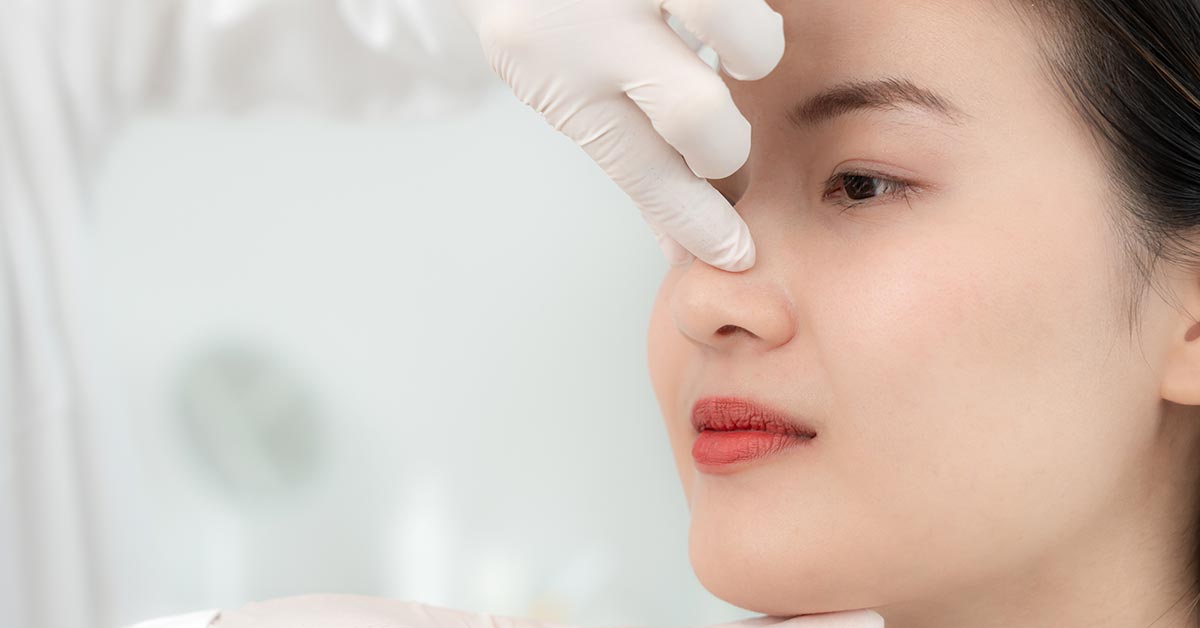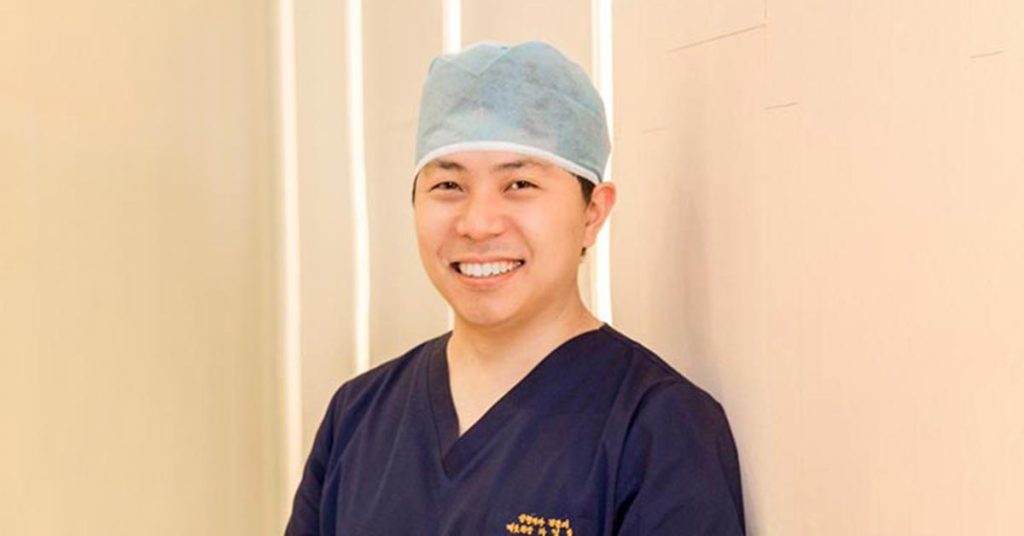Source: Mina Plastic Surgery.
What Is Nose Bridge Plasty?
Nose bridge plasty is also known as nose augmentation, a surgical cosmetic procedure that reshapes the nose to have a more balanced and proportionate facial appearance. This procedure has two types: nose bridge implant and osteotomy.
A low or wide nose bridge may make your eyes appear further apart and create a flat profile. Meanwhile, a crooked nose bridge may make a person look more mature. But besides these appearance insecurities, it may cause problems in breathing, rhinitis, and other nasal inconvenience.
A nose bridge plasty will correct these functional problems and give the patients a sleek and prominent nose that balances their facial structure and adds a sharper touch to their face.
If you plan to have a nose bridge plasty in South Korea, you have two options, augmentation through implant or osteotomy.
Types of Bridge Plasty
Nose bridge Implant
Nose bridge Implant procedure is done to heighten the nose bridge. Low nose bridge may make the face look flat, and the mouth protruded. Adjusting the height of the nose bridge brings a more clear structure and definition to the face. Options for Nose bridge implant includes open or closed incision. This will be designated depending on the shape of each patient’s nose.
Osteotomy
Osteotomy is done to trim or reposition the nose bridge. This procedure could be applied to hooked, wide, or crooked nose bridges. Depending on the patient’s nose shape and condition, Osteotomy could be done bilaterally, or with an implant.
How it works
Nose bridge Implant
The implant material can be silicone, Gore-Tex, or other synthetic materials. Your forehead to nose tip is considered throughout the procedure, and the prosthesis is carved according to each patient’s nose line. When the room for nasal prosthesis is made and implanted, the plastic surgeon stitches the incision back up.

Osteotomy is recommended for two different types of nose bridges. Hooked nose bridge, and crooked nose bridge. Having a non-straight nose bridge tends to break the balance of the face, and even cause discomfort in breathing. Osteotomy will also work well for those who want to achieve a younger, gentler look- as a bumpy nose bridge may occur an aged, rough appearance. Also, this procedure fixes the problem of bending prosthesis from a former implant procedure.
Nose Bridge Plasty Recommended To
- Hooked Nose.
- Crooked Nose Bridge.
- Inconvenience Breathing.
- Bumpy Nose Bridge.
- Bent Prosthesis.
How it works
Osteotomy
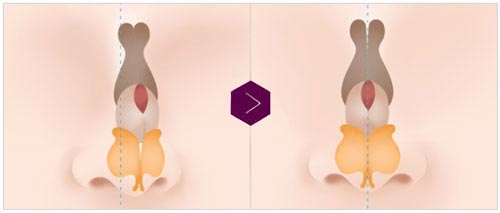
Osteotomy on a crooked nose bridge focuses on straightening it out. The plastic surgeon corrects the deviated nose bridge by fracturing the part that sticks out and aligning the remaining bone.
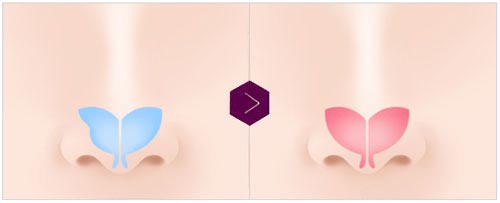
A crooked nose bridge and cartilage may cause several discomforts. The plastic surgeon will separate the nasal septum cartilage from the bone and reposition it in a more suitable place to form a straight line.
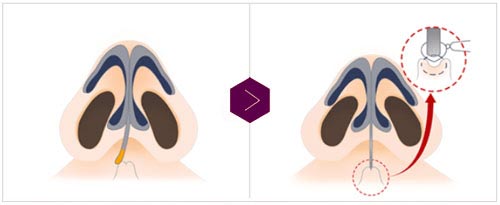
Meanwhile, if your crooked nose is due to a bent nasal septum cartilage, The plastic surgeon needs to operate on the cartilage. It involves removing and repositioning the cartilage.
Why Do People Choose To Have Nose Bridge Plasty?
People have different needs and concerns with their nose, making them choose to have nose bridge plasty. Here are some of the few reasons why people choose to have this procedure:
- Cosmetic concerns. Some people may feel that their nose is too large or small, crooked, or asymmetrical, and nose bridge plasty can help to create a more balanced and proportionate facial appearance. This cosmetic surgery may help improve one’s appearance by altering shape, size, and proportion.
- Breathing difficulties. A deviated septum or other structural abnormalities in the nose can cause breathing difficulties and congestion. Nose bridge plasty can correct these issues, improving breathing and overall quality of life.
- Trauma or injury. A broken nose can cause deformities or functional issues that can be corrected to restore the appearance and function of the nose after a trauma or injury.
- Cultural or social norms. Some cultures consider a high nose bridge a desirable trait, and some people choose to have a nose bridge plasty to conform to these norms.
Who Is A Good Candidate For Nose Bridge Plasty?
A bumpy nose bridge looks rough when we age, and osteotomy will help achieve a younger and gentler look. Besides this, cosmetic surgeons also recommend the procedure for individuals who have the following:
- Crooked or misaligned nose due to genetics or injury.
- Asymmetrical or irregular shape.
- Disproportionately large or small noses in relation to the rest of their facial features.
- A deviated septum or structural abnormalities may cause breathing difficulties in the person.
- A bent prosthesis needs correction.
Patients with these cases may also have good overall health and do not have any medical conditions that may increase their risk of complications during surgery. Other factors may also influence your candidacy for nose bridge plasty, including age, skin thickness, and realistic expectations of the procedure outcome.
Book a consultation with a cosmetic surgeon to determine if nose bridge plasty is the best option for you, and discuss the potential risks and benefits of the procedure.
Nose Bridge Plasty Recovery And Aftercare
The recovery period for nose bridge plasty and osteotomy lasts about 2 to 3 weeks. It varies depending on the procedure extent and the individual’s healing ability. After the procedure, you will experience bruising, swelling, and discomfort. Your cosmetic surgeon will prescribe pain medication and antibiotics to help manage these symptoms. You must also wear a nose splint or cast for about a week to stabilize your nose and reduce its swelling.
During the first week, you must sleep with your head elevated to reduce swelling and avoid blowing or sniffling your nose to prevent damage to the healing tissues. It is also important to avoid strenuous activities. Your surgeon may schedule a follow-up appointment on the first week to monitor the progress and remove any sutures or packing.
In the second week, you can resume some light activities, and the swelling and bruising should start to subside. Your cosmetic surgeon may have provided instructions for cleaning and medications to help with healing.
Most of the swelling and bruising should have resolved by the third week. You can start to resume your normal activities but still avoid strenuous activities, especially contact sports.
Besides these things to remember during your recovery phase, there are some things you have to keep in mind to ensure the best possible outcome for your nose bridge plasty.
- Avoid sun exposure for at least 6 months after the procedure. You can protect your nose from sun exposure by wearing a hat or sunscreen with at least SPF 30 to prevent scarring and discoloration.
- You have to cleanse your nose with soap and water gently. Use the saline solution or the provided medication to clean the inside of your nose. Do not put any pressure or rubbing on the surgical area when cleaning your nose.
- If you smoke, avoid smoking. This may impair the healing process and increase the risk of complications. It is best to avoid smoking or any other tobacco products for at least 2 to 3 weeks before and after the procedure.
- Always visit your scheduled follow-up appointments to monitor your healing process and for the surgeon to provide additional treatments or recommendations. It is essential to attend these appointments and follow any instructions.
Consult Our Preferred Doctor In Korea On Your Rhinoplasty
Dr Jeongho Cha is the primary plastic surgeon at Mina Plastic Surgery in South Korea. He belongs to the top circle of plastic surgeons in Korea and is certified by all government approved plastic surgery boards. He is also an international member of The American Society of Plastic Surgeons (ASPS), the largest plastic surgery specialty organisation in the world, which comprises 94% of all board-certified plastic surgeons in the United States. Dr Jeongho Cha is a fluent English speaker with a diverse international clientele, trusted by patients from Japan, Indonesia and Singapore.
Click on the image below to learn more about Dr Cha. Find out if he is the best plastic surgeon for you.
If you are interested in rhinoplasty surgery in Korea, contact us to book a consultation with Dr Jeongho Cha.
See What Dr Cha Has To Say About Rhinoplasty
Contact Us For A Consultation With Dr Cha
For questions and inquiries on arrangement for a consultation with Dr Jeongho Cha, contact Health365 Aesthetic through the button below.
Protect against cancer, cardiovascular disease, and other chronic diseases with regular health screening. Compare and shop for health screenings from Singapore and regional healthcare providers at a single convenient platform - shop.health365.sg
This article is informative only and is not intended to be a substitute for professional medical advice, diagnosis, or treatment, and should never be relied upon for specific medical advice.






